Abstract
Concepts of QSAR analysis and biological similarity models are combined for use in extrapolation of LD50 values after IP application of a series of aliphatic alcohols (C1-C5) to mouse, hamster, rat, and guinea pig and rabbit. It has been found that although close correlation exists between LD50 values after IP and IV applications for mouse and rat, the QSARs obtained with LD50 after IV application are not suitable for a prediction of LD50 values after IP application for rabbit. Different transformation or distribution processes in mouse, rat, and rabbit after the two types of applications might be the reason. The LD50 values (expressed in mmole/m2 of body surface) seem to be independent of mammalian species used (at least within the mouse, rat, hamster, and probably guinea pig series). This fact makes it possible to predict reasonable values of LD50 after IP application for rabbit. Expression of toxicity in mmole/m2 of body surface may be useful in toxicological studies. The model of quantitative structure-activity-species relationships (QSASR) for the system of alcohols and animals chosen is proposed: log BAij = kj + lj log Xi log BAij = aj + bi log Zj where i denotes an alcohol, j an animal, BA being LD50 (mmole/m2) after IP application, X molecular connectivity 1 chi and Z body surface: body weight ratio. The model is based on the assumption that bi is independent of chemical structure (being zero or close to zero), ai is a function of molecular connectivity 1 chi, kj and lj being independent of animal species. These assumptions resulted from the statistical analysis of QSARs and allometric equations obtained under various conditions.
Full text
PDF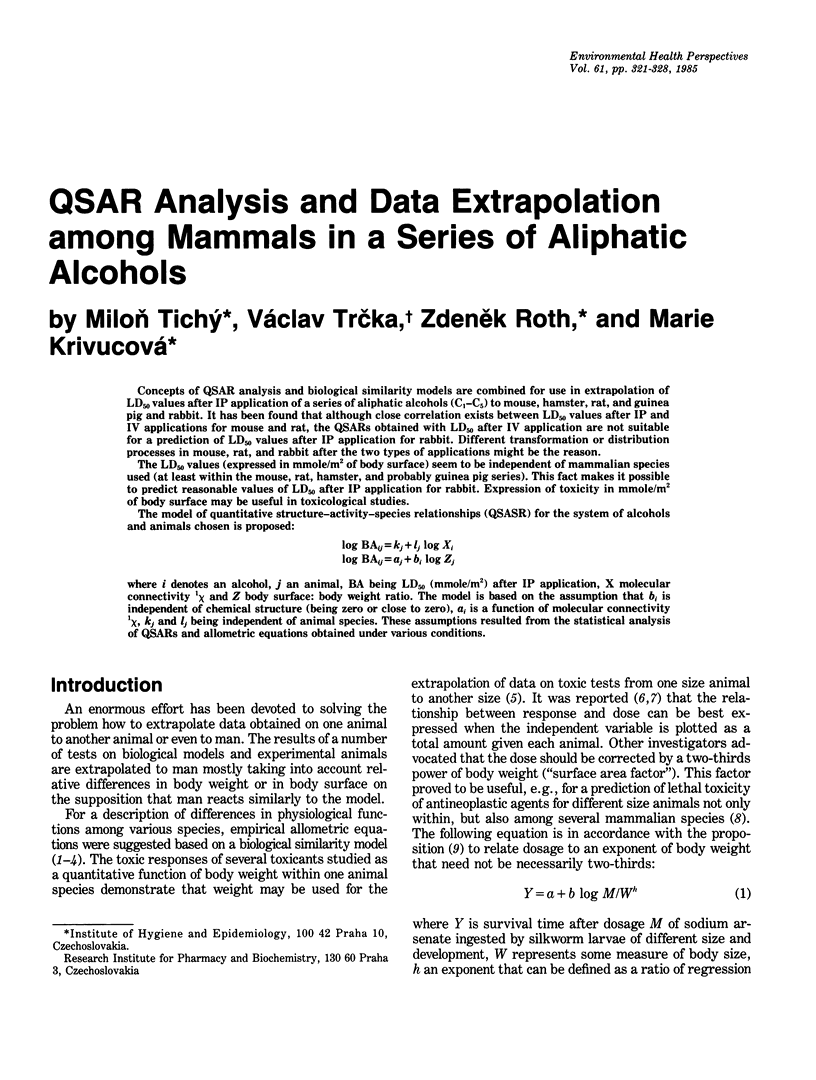
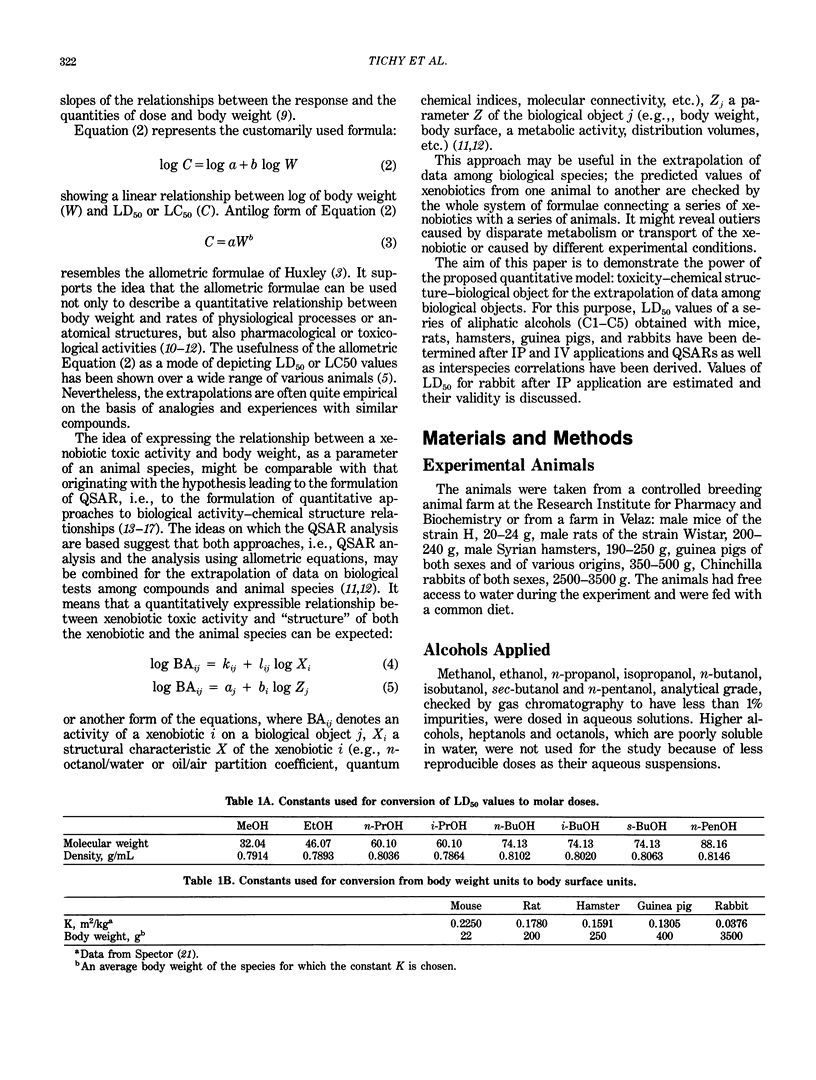
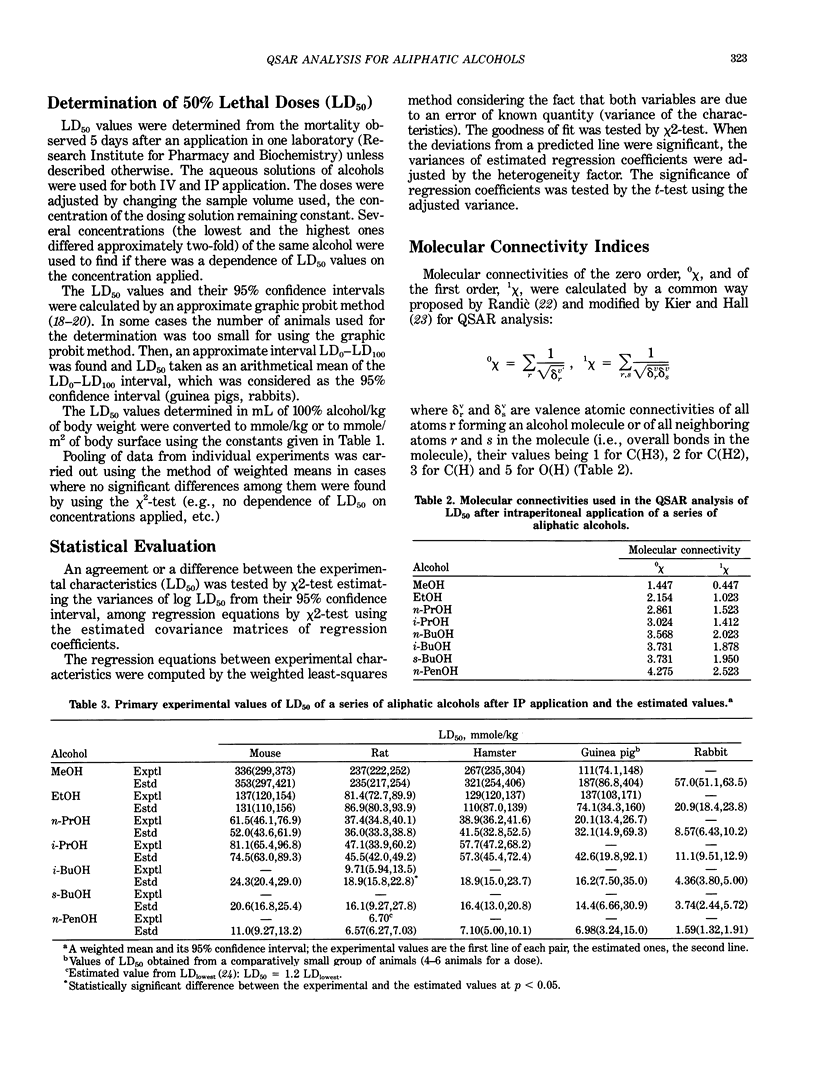
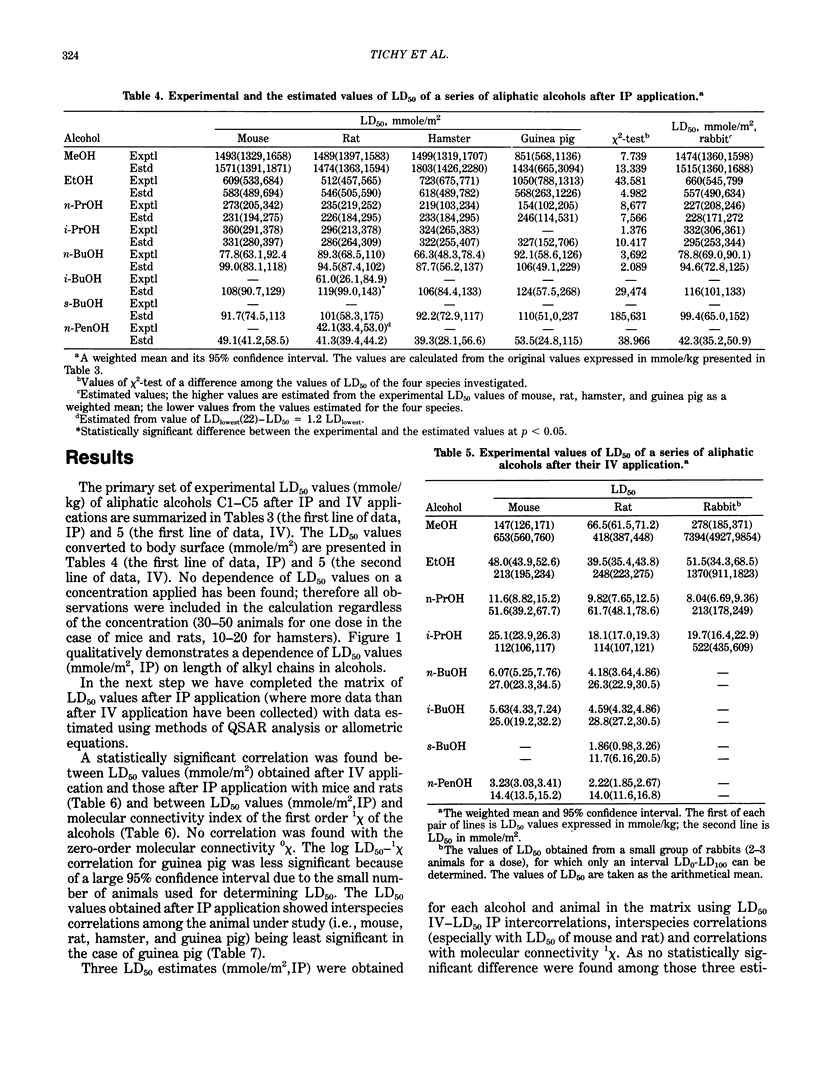
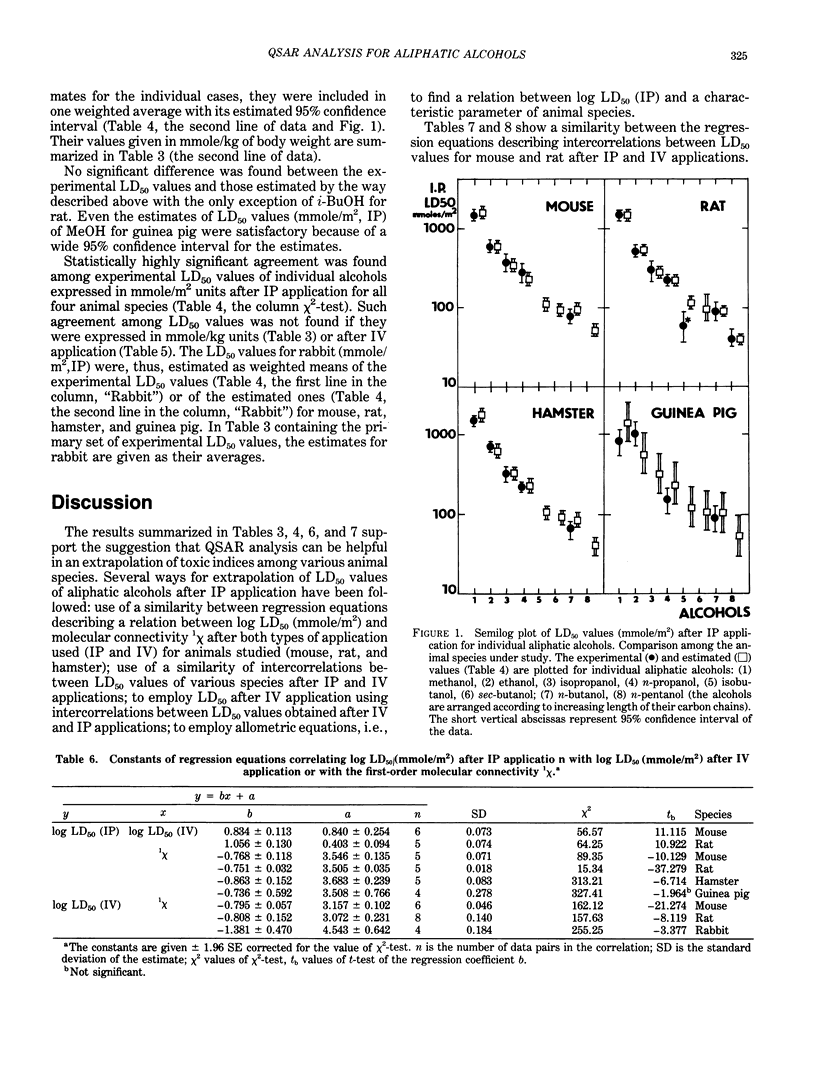
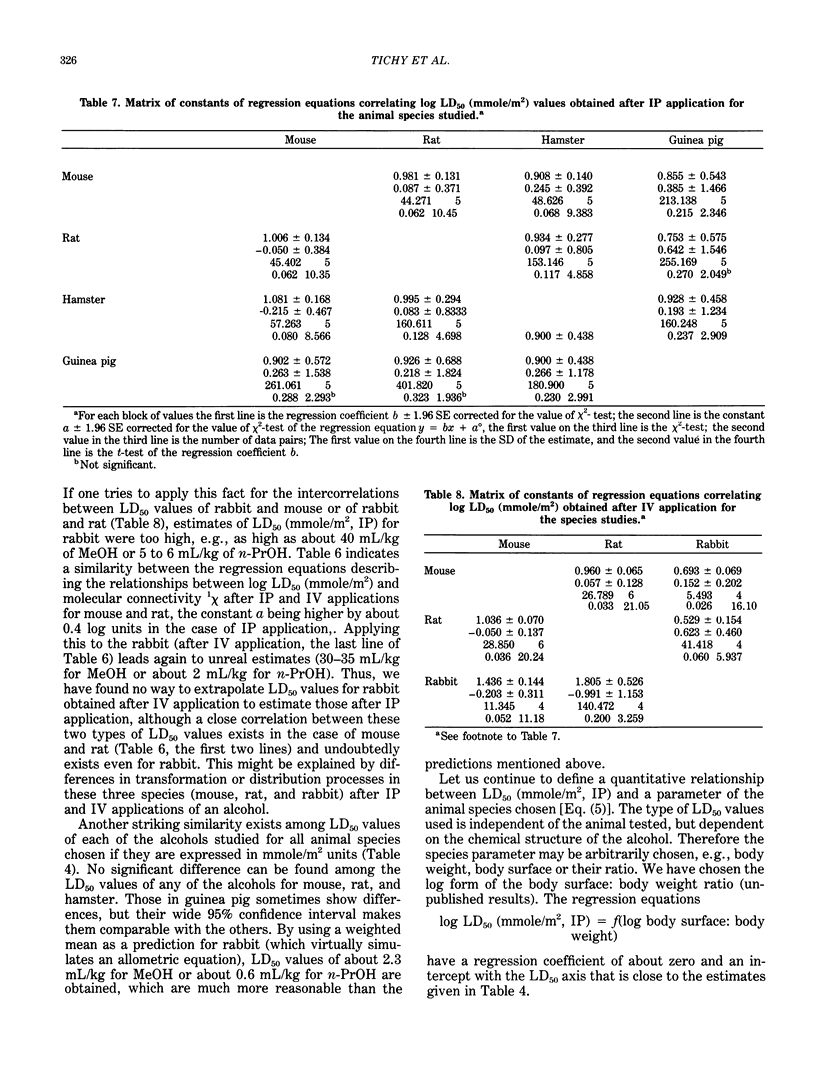
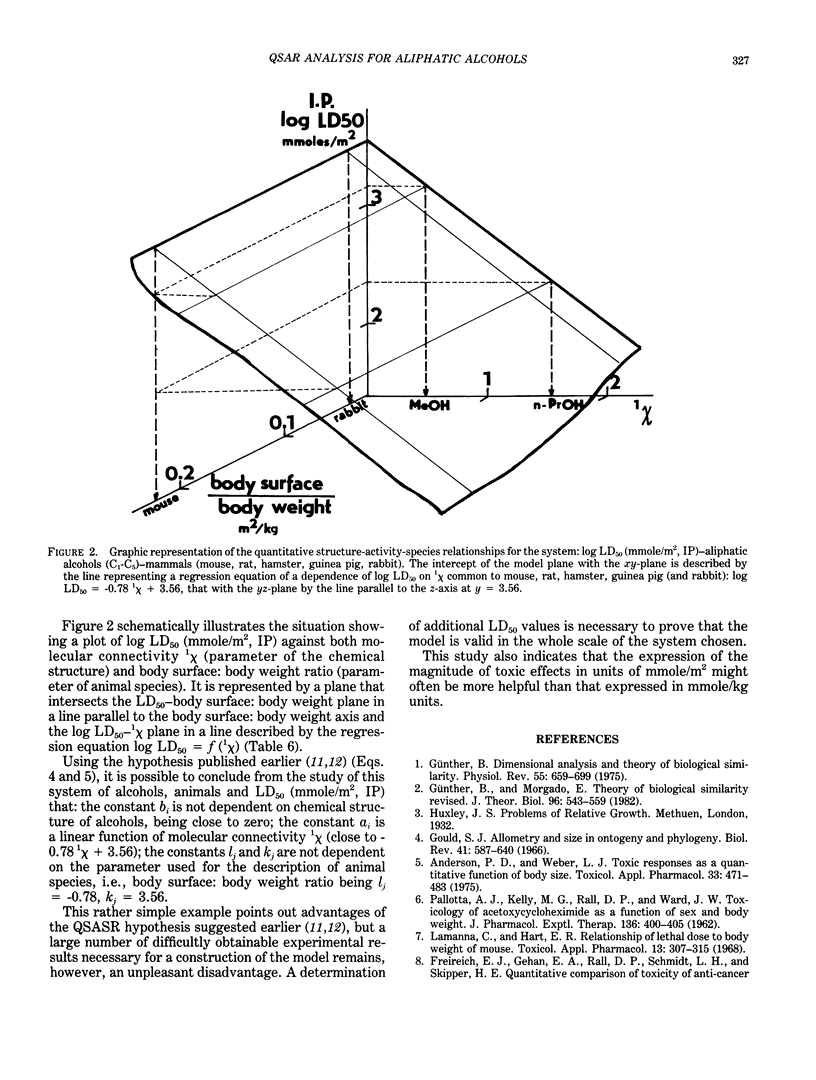
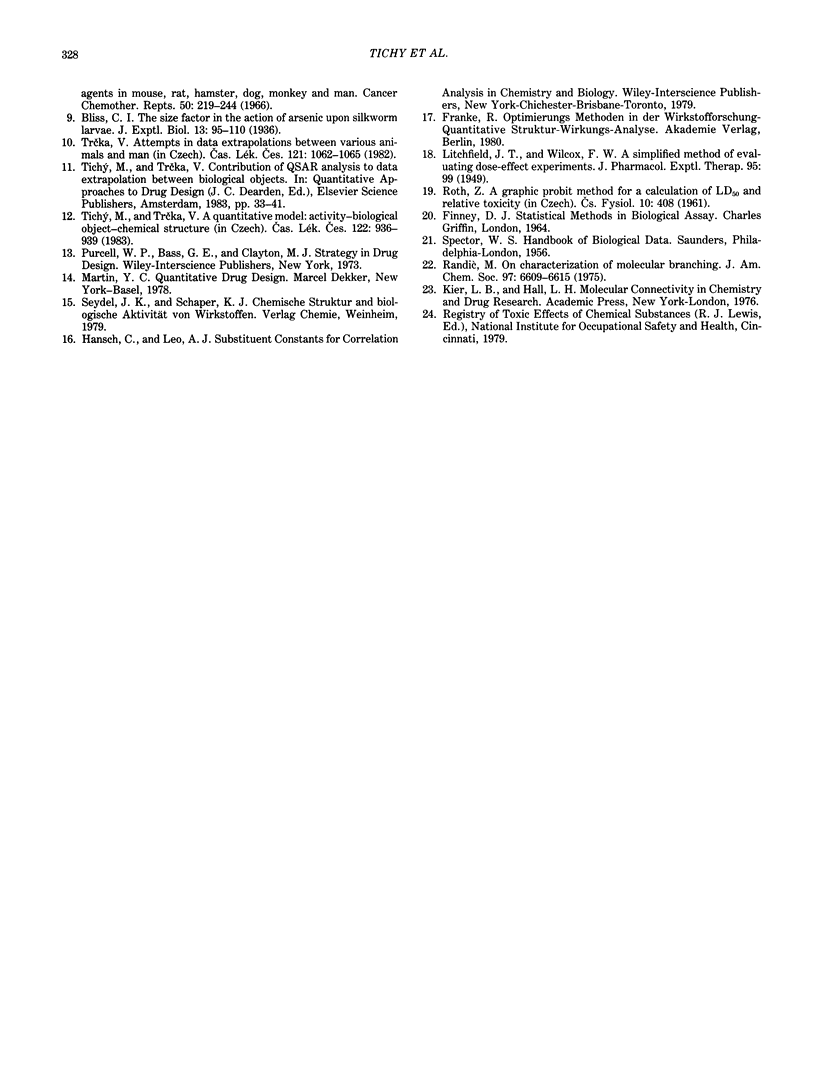
Selected References
These references are in PubMed. This may not be the complete list of references from this article.
- Anderson P. D., Weber L. J. Toxic response as a quantitative function of body size. Toxicol Appl Pharmacol. 1975 Sep;33(3):471–483. doi: 10.1016/0041-008x(75)90073-3. [DOI] [PubMed] [Google Scholar]
- Freireich E. J., Gehan E. A., Rall D. P., Schmidt L. H., Skipper H. E. Quantitative comparison of toxicity of anticancer agents in mouse, rat, hamster, dog, monkey, and man. Cancer Chemother Rep. 1966 May;50(4):219–244. [PubMed] [Google Scholar]
- Gould S. J. Allometry and size in ontogeny and phylogeny. Biol Rev Camb Philos Soc. 1966 Nov;41(4):587–640. doi: 10.1111/j.1469-185x.1966.tb01624.x. [DOI] [PubMed] [Google Scholar]
- Günther B. Dimensional analysis and theory of biological similarity. Physiol Rev. 1975 Oct;55(4):659–699. doi: 10.1152/physrev.1975.55.4.659. [DOI] [PubMed] [Google Scholar]
- Günther B., Morgado E. Theory of biological similarity revisited. J Theor Biol. 1982 Jun 21;96(4):543–559. doi: 10.1016/0022-5193(82)90230-2. [DOI] [PubMed] [Google Scholar]
- Lamanna C., Hart E. R. Relationship of lethal toxic dose to body weight of the mouse. Toxicol Appl Pharmacol. 1968 Nov;13(3):307–315. doi: 10.1016/0041-008x(68)90104-x. [DOI] [PubMed] [Google Scholar]
- PALLOTTA A. J., KELLY M. G., RALL D. P., WARD J. W. Toxicology of acetoxycycloheximide as a function of sex and body weight. J Pharmacol Exp Ther. 1962 Jun;136:400–405. [PubMed] [Google Scholar]
- ROTH Z. [A graphic probit method for the calculation of LD50 and relative toxicity]. Cesk Fysiol. 1961 Oct;10:408–422. [PubMed] [Google Scholar]


